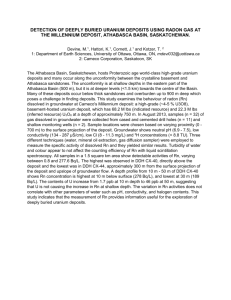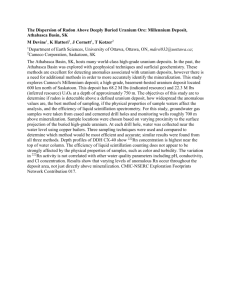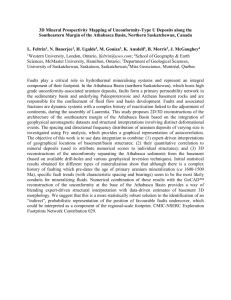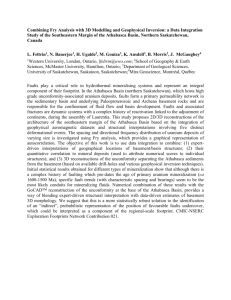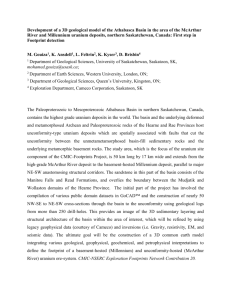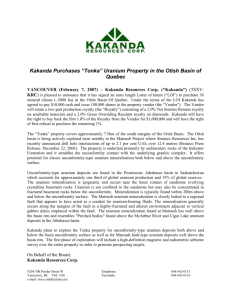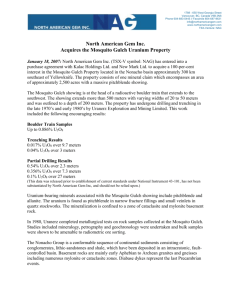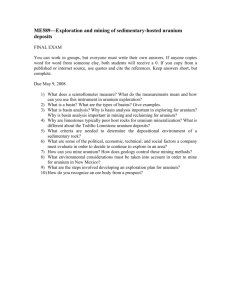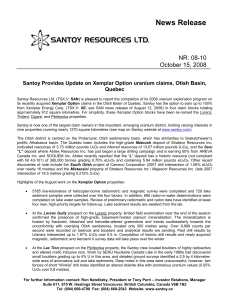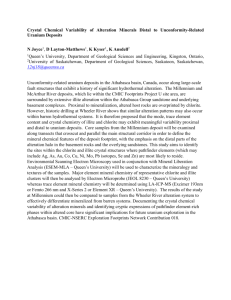Devine
advertisement
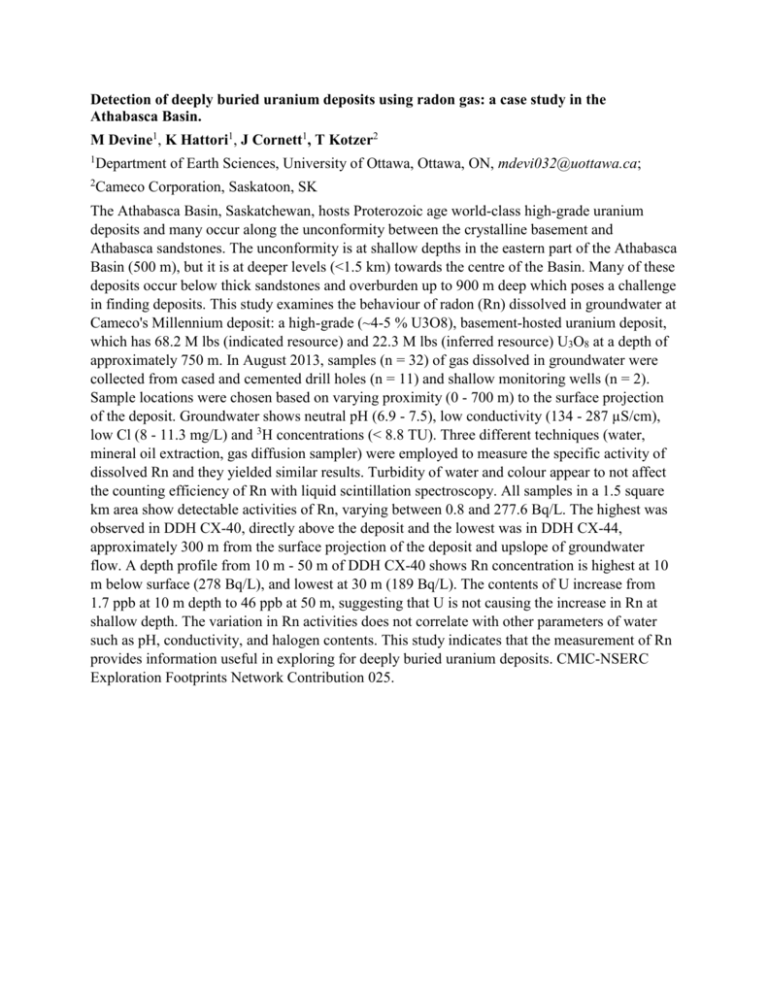
Detection of deeply buried uranium deposits using radon gas: a case study in the Athabasca Basin. M Devine1, K Hattori1, J Cornett1, T Kotzer2 1 Department of Earth Sciences, University of Ottawa, Ottawa, ON, mdevi032@uottawa.ca; 2 Cameco Corporation, Saskatoon, SK The Athabasca Basin, Saskatchewan, hosts Proterozoic age world-class high-grade uranium deposits and many occur along the unconformity between the crystalline basement and Athabasca sandstones. The unconformity is at shallow depths in the eastern part of the Athabasca Basin (500 m), but it is at deeper levels (<1.5 km) towards the centre of the Basin. Many of these deposits occur below thick sandstones and overburden up to 900 m deep which poses a challenge in finding deposits. This study examines the behaviour of radon (Rn) dissolved in groundwater at Cameco's Millennium deposit: a high-grade (~4-5 % U3O8), basement-hosted uranium deposit, which has 68.2 M lbs (indicated resource) and 22.3 M lbs (inferred resource) U3O8 at a depth of approximately 750 m. In August 2013, samples (n = 32) of gas dissolved in groundwater were collected from cased and cemented drill holes (n = 11) and shallow monitoring wells (n = 2). Sample locations were chosen based on varying proximity (0 - 700 m) to the surface projection of the deposit. Groundwater shows neutral pH (6.9 - 7.5), low conductivity (134 - 287 µS/cm), low Cl (8 - 11.3 mg/L) and 3H concentrations (< 8.8 TU). Three different techniques (water, mineral oil extraction, gas diffusion sampler) were employed to measure the specific activity of dissolved Rn and they yielded similar results. Turbidity of water and colour appear to not affect the counting efficiency of Rn with liquid scintillation spectroscopy. All samples in a 1.5 square km area show detectable activities of Rn, varying between 0.8 and 277.6 Bq/L. The highest was observed in DDH CX-40, directly above the deposit and the lowest was in DDH CX-44, approximately 300 m from the surface projection of the deposit and upslope of groundwater flow. A depth profile from 10 m - 50 m of DDH CX-40 shows Rn concentration is highest at 10 m below surface (278 Bq/L), and lowest at 30 m (189 Bq/L). The contents of U increase from 1.7 ppb at 10 m depth to 46 ppb at 50 m, suggesting that U is not causing the increase in Rn at shallow depth. The variation in Rn activities does not correlate with other parameters of water such as pH, conductivity, and halogen contents. This study indicates that the measurement of Rn provides information useful in exploring for deeply buried uranium deposits. CMIC-NSERC Exploration Footprints Network Contribution 025.
